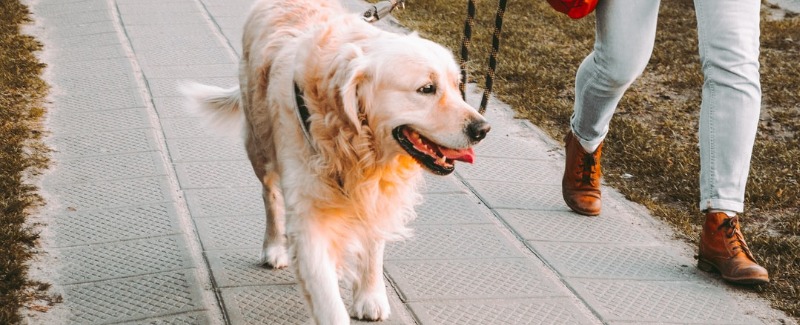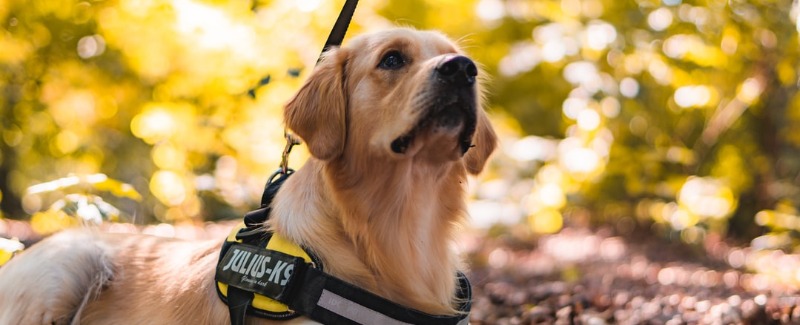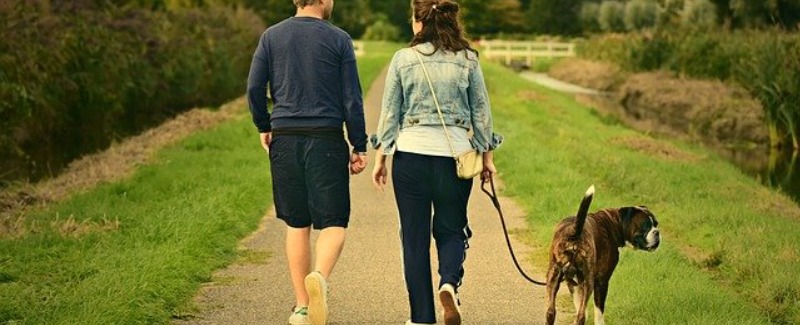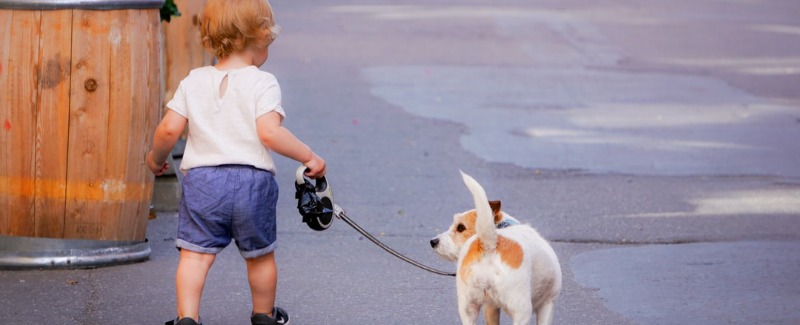Your basic 6-foot leash is what you’ll be using in your everyday life with your dog. It’s perfect for neighborhood walks, trips to the vet, and anywhere you need to control your dog’s movement in close proximity to yourself. Now that you’ve spent some time playing the follow me game and teaching your dog leash respect on the long-line, the transition to your 6-foot leash should be a breeze.
The Walkaway
Before you take your dog out into the world for a training walk on your 6-foot leash, practice the walkaway without your dog, although a human stand-in is really helpful. Here’s the move: Put the leash’s handle loop over your right thumb, and grasp the rest of the handle in your right hand, anchored at your waist. Gather up the slack in one loop and hold it in your right hand with the handle. With your left hand, give your “dog “ just enough slack to stand comfortably next to you, with a little dip in the leash between you and the “dog.” Hold the leash lightly in your left hand, in a natural position at your side.
Start walking, and instruct your helper to go anywhere they want, except with you. The moment the slack in the leash disappears and you feel any tension, drop everything except the handle, turn abruptly to your right, and walk away as fast as you can. Your dog will get a “pop’ on the leash and have no choice but to come with you. Praise and gather up the slack as quickly as you can and be prepared to do it again — quickly. Repeat until you can release, turn, plow on, and gather up the slack without thinking about it before trying it with your dog. Yes, your neighbors will think you’ve lost your mind, but it’s all worth it for the cause. Now go practice with your real dog.
Be predictably unpredictable. Turn often, always opposite of the side your dog is on, at random times and angles. If your dog doesn’t know which way you’ll be going next, he’ll pay much closer attention. Don’t warn him that you’re going to turn or wait for him at the turn, but do praise enthusiastically every time he catches up.
Hitting the Road
It’s finally time to take your dog for a walk around the neighborhood. From the start, be ready to do the walkaway before the leash is tight. The only time there should ever be tension on the leash is the little pop your dog gets when he gets left behind on a walkaway. Do not guide or steer your dog on a tight leash, and do not beg him for his attention. Disappear if he’s not paying attention, and make it rewarding for him when he does look to see where you’re going. The first session, you may only travel half a block, and that’s fine. The important thing is that your dog learns that he’s coming with you, not the other way around. In general, the faster you walk, the more interesting you’ll be to your dog, so put on some sturdy shoes and go! If you dawdle, he’s much more likely to get bored and let his attention and discipline wander.





